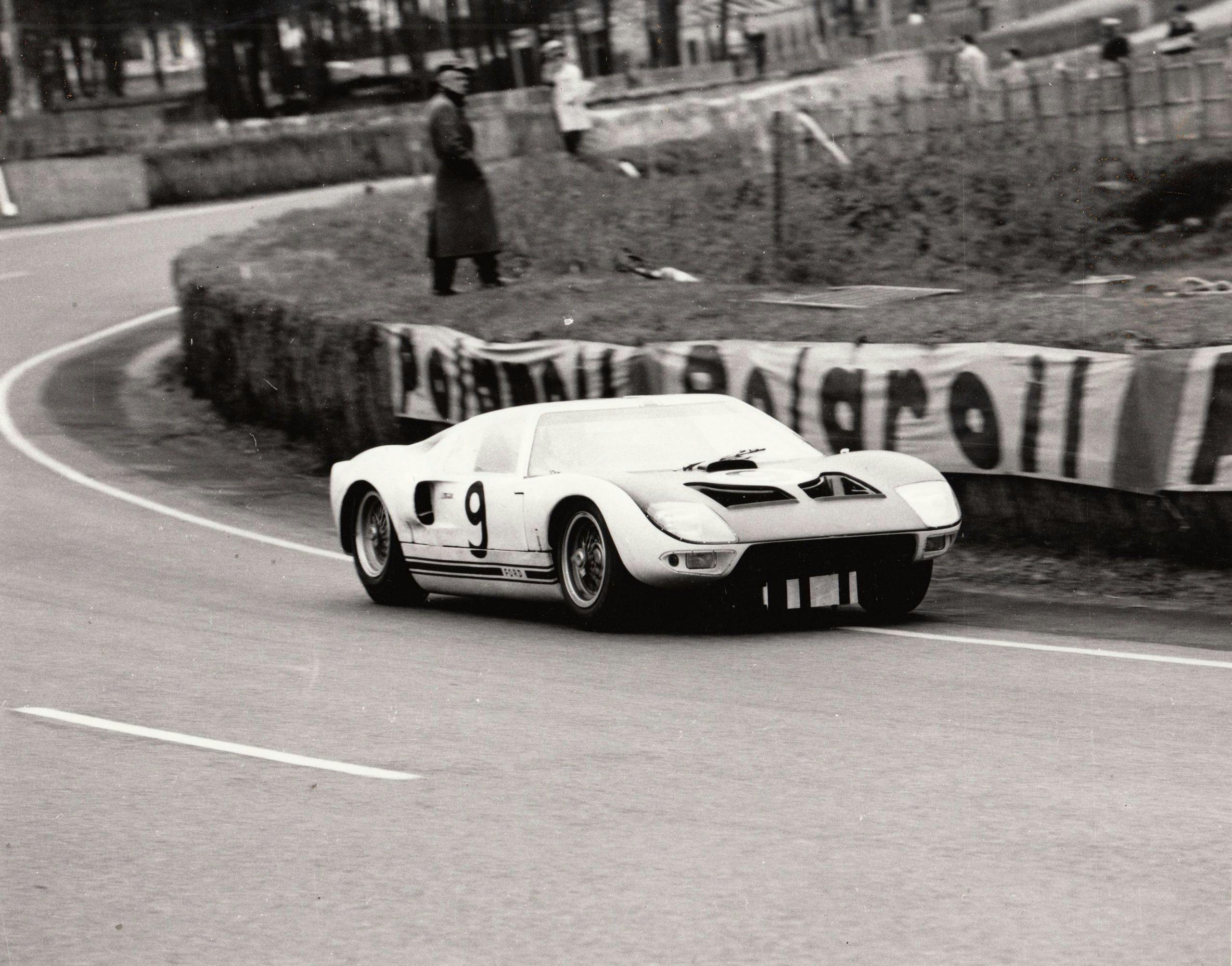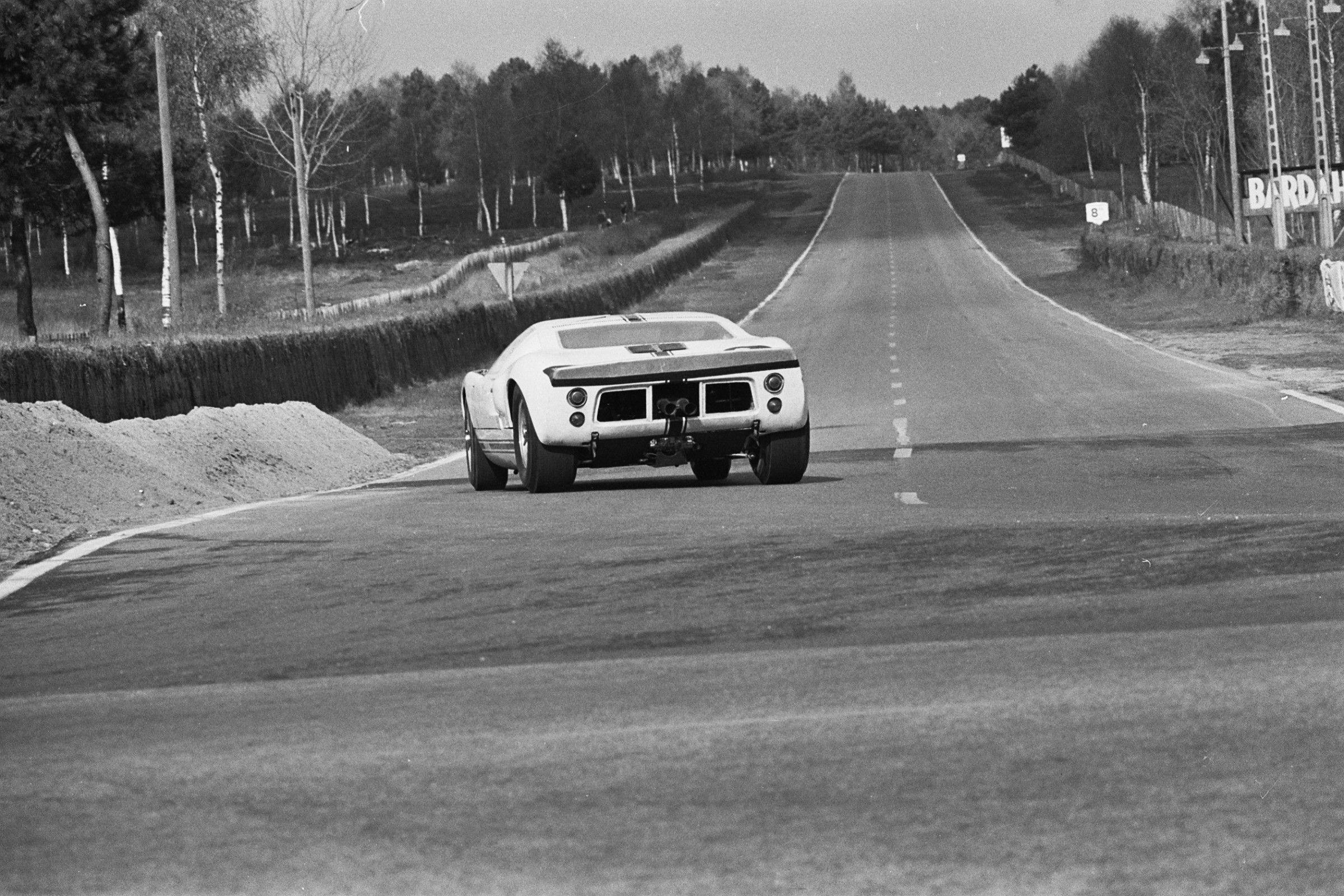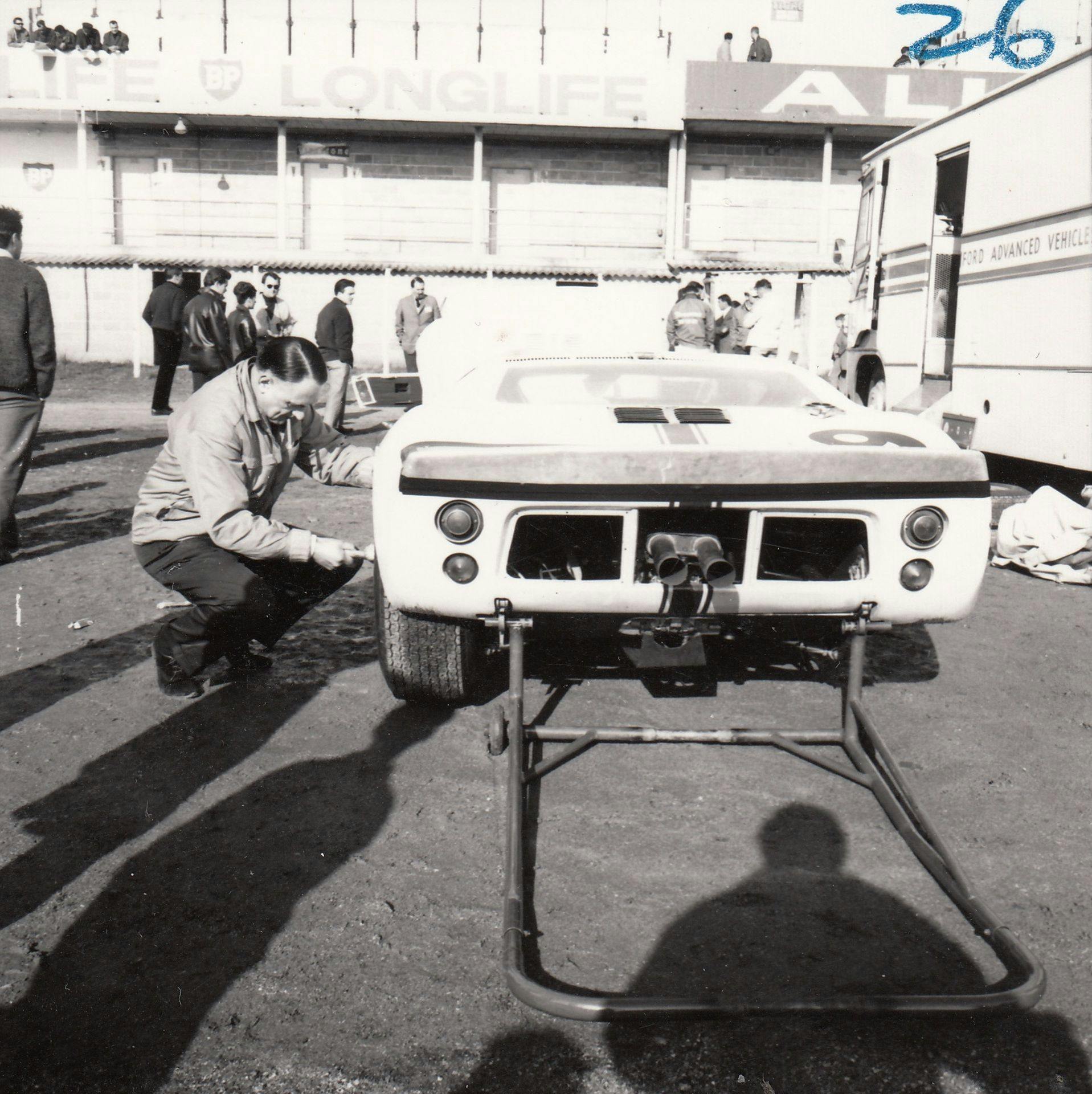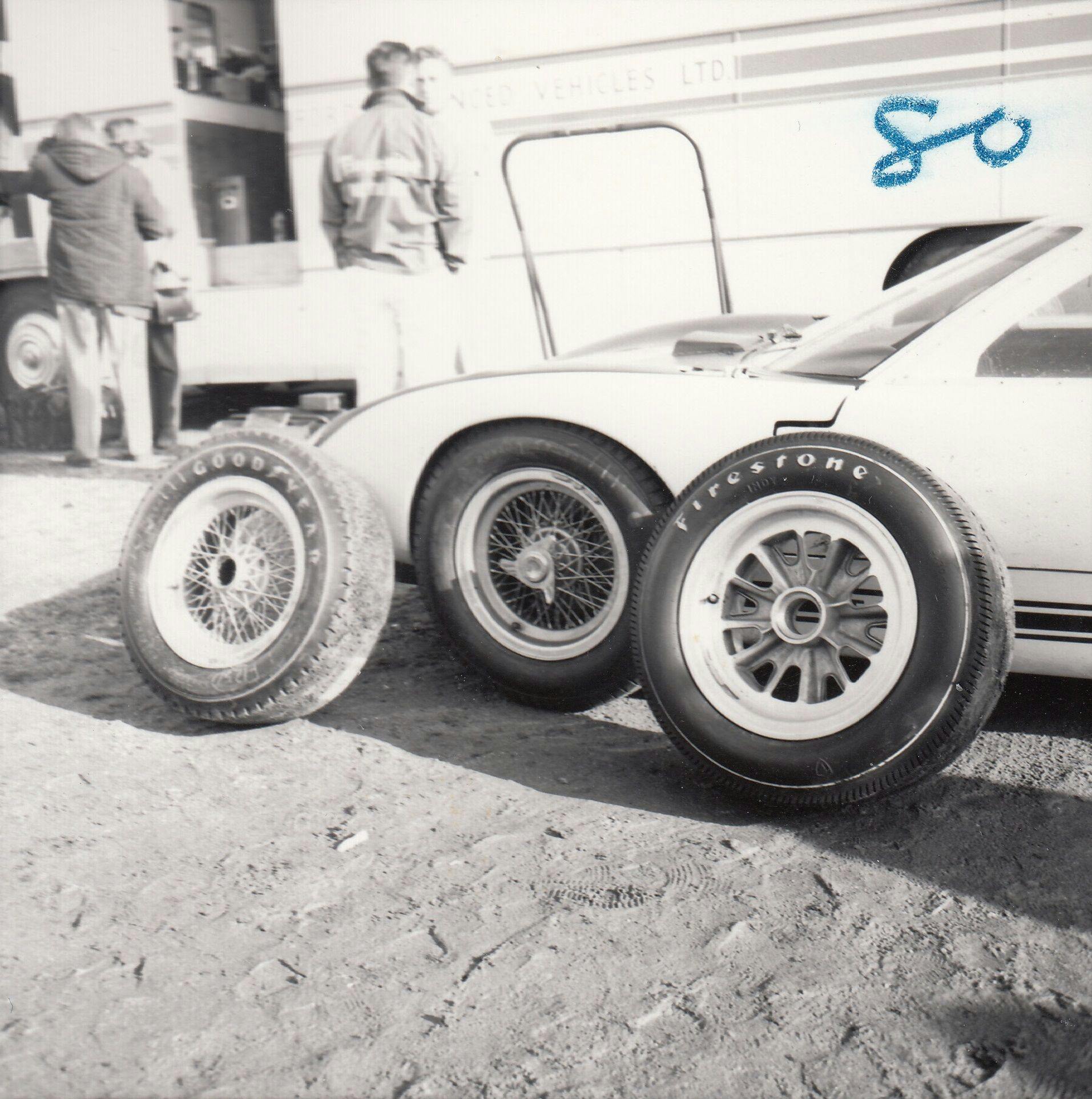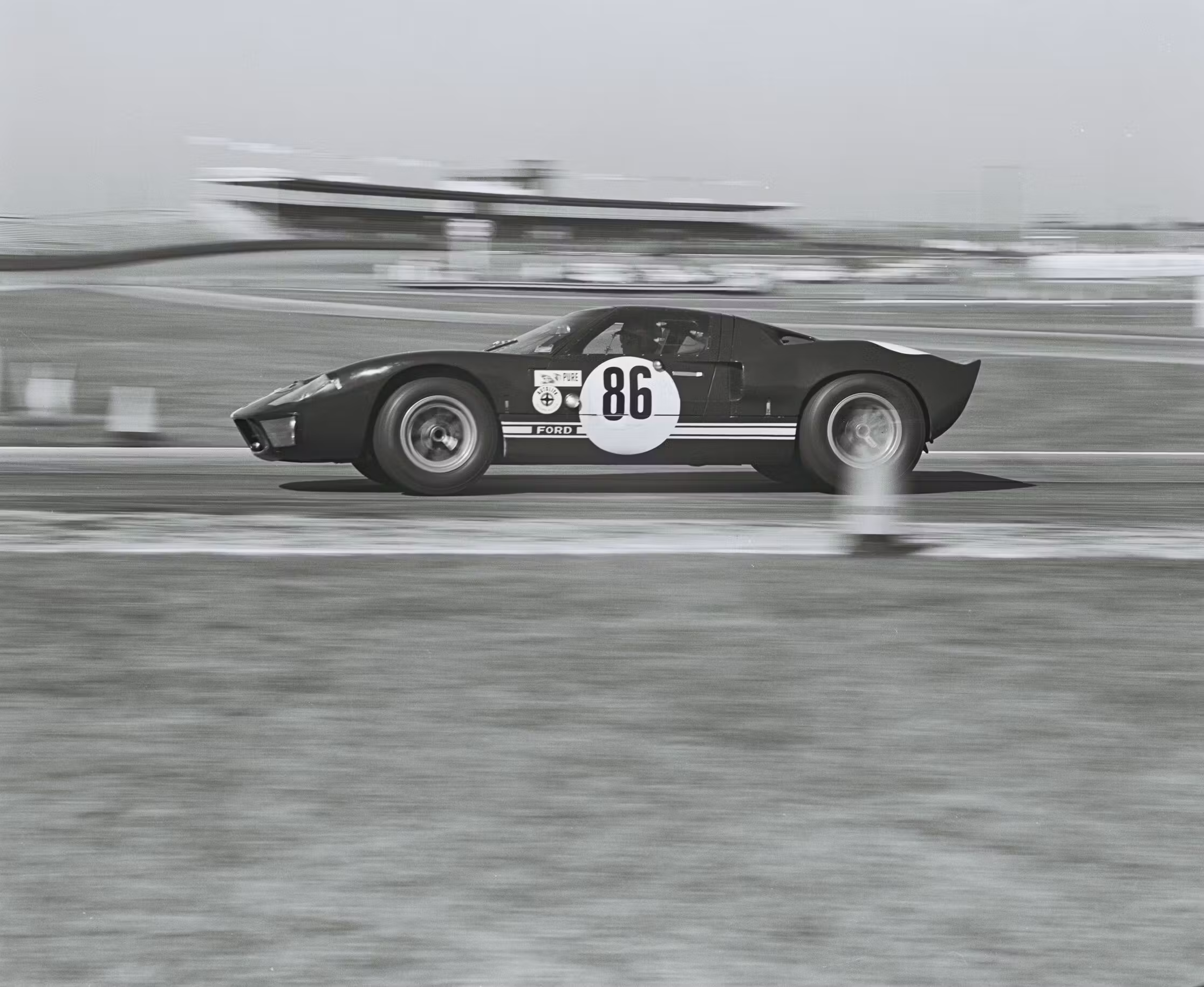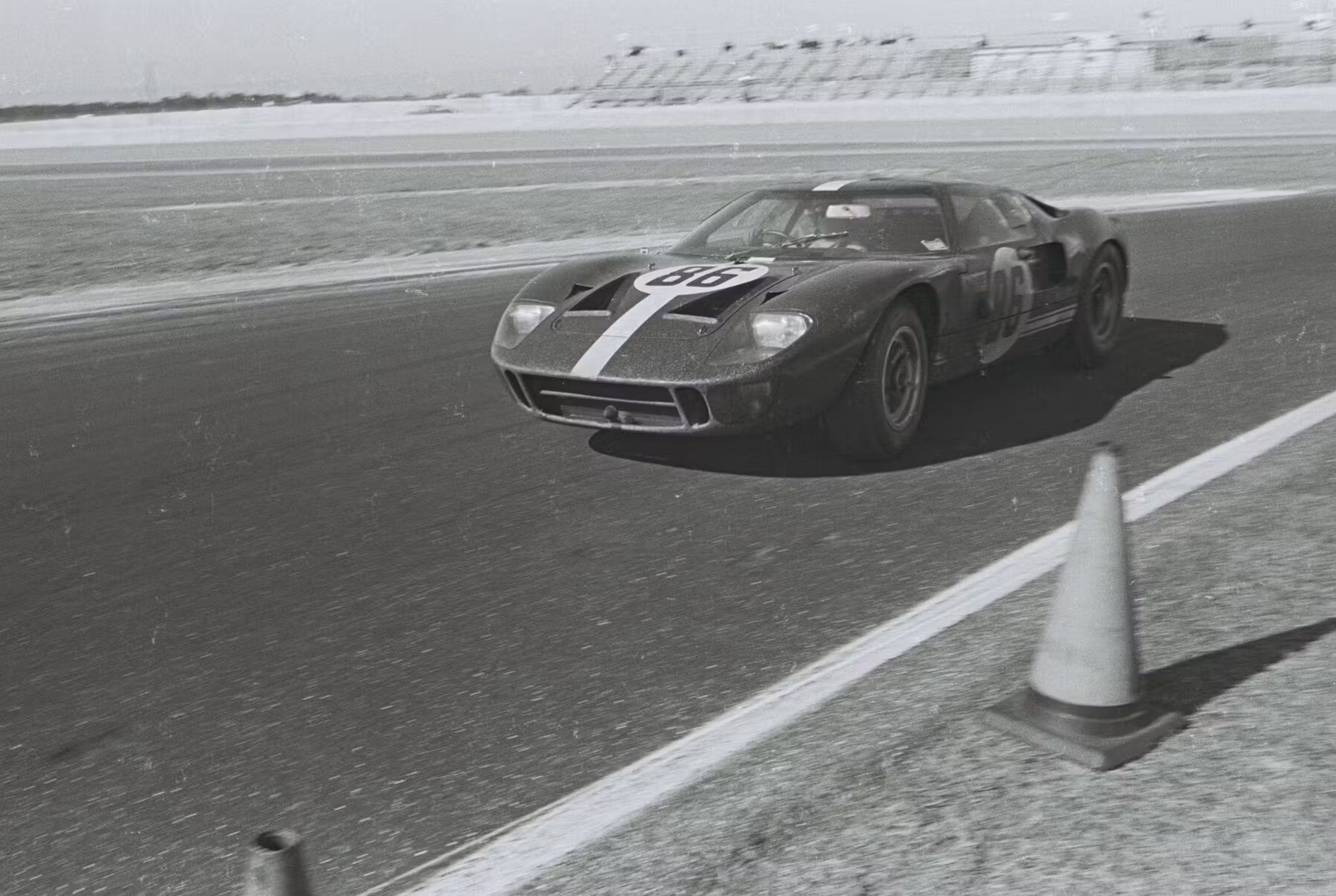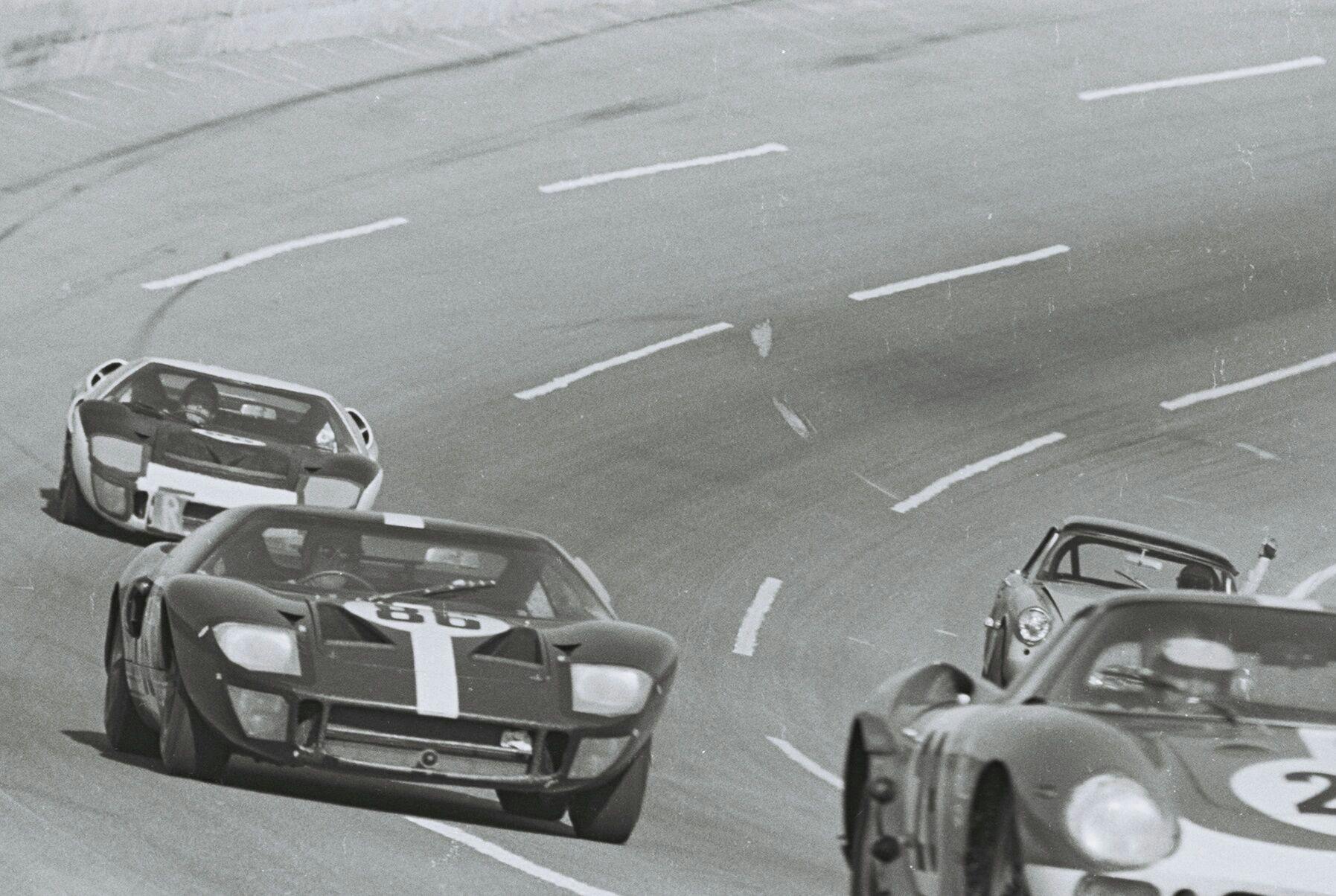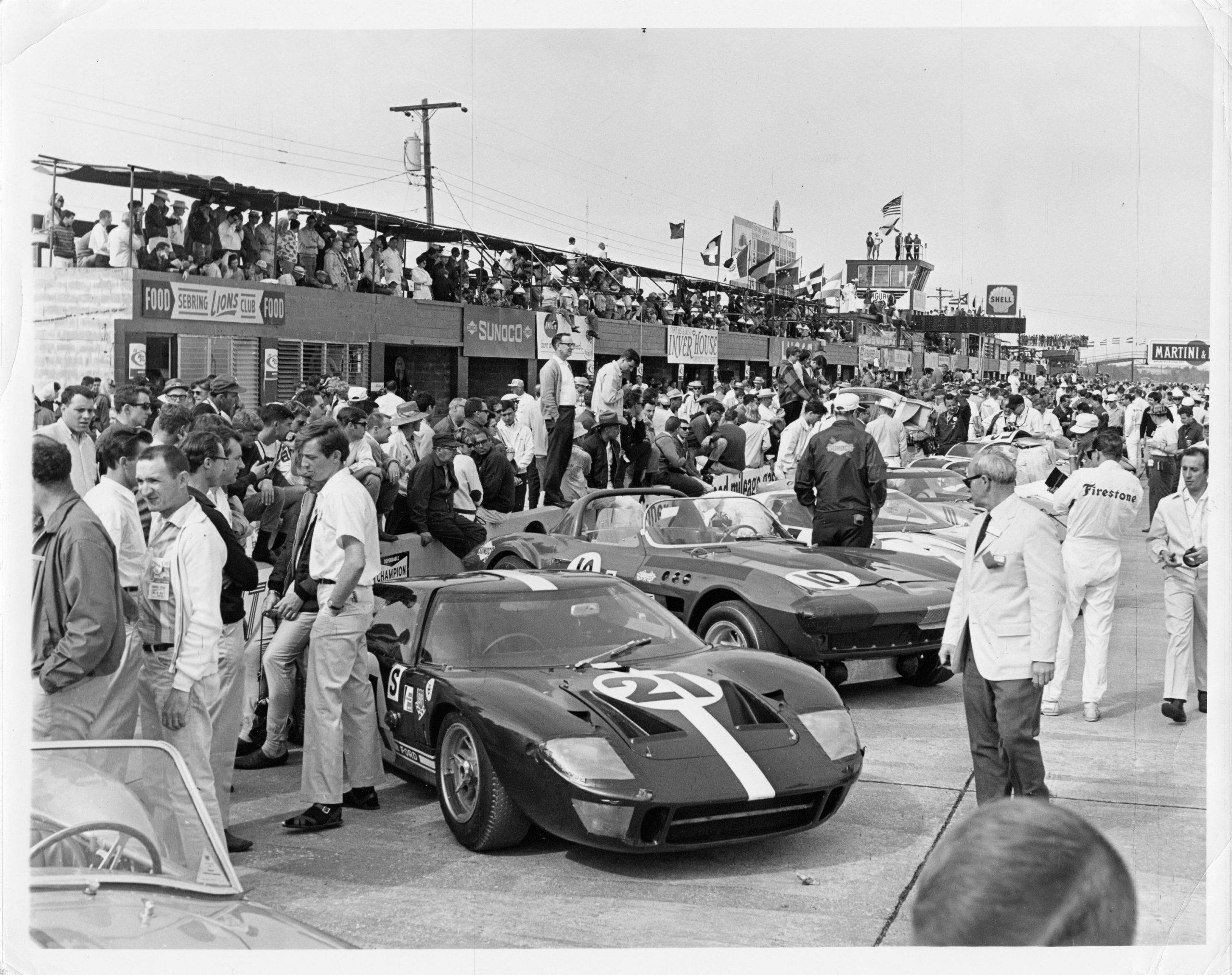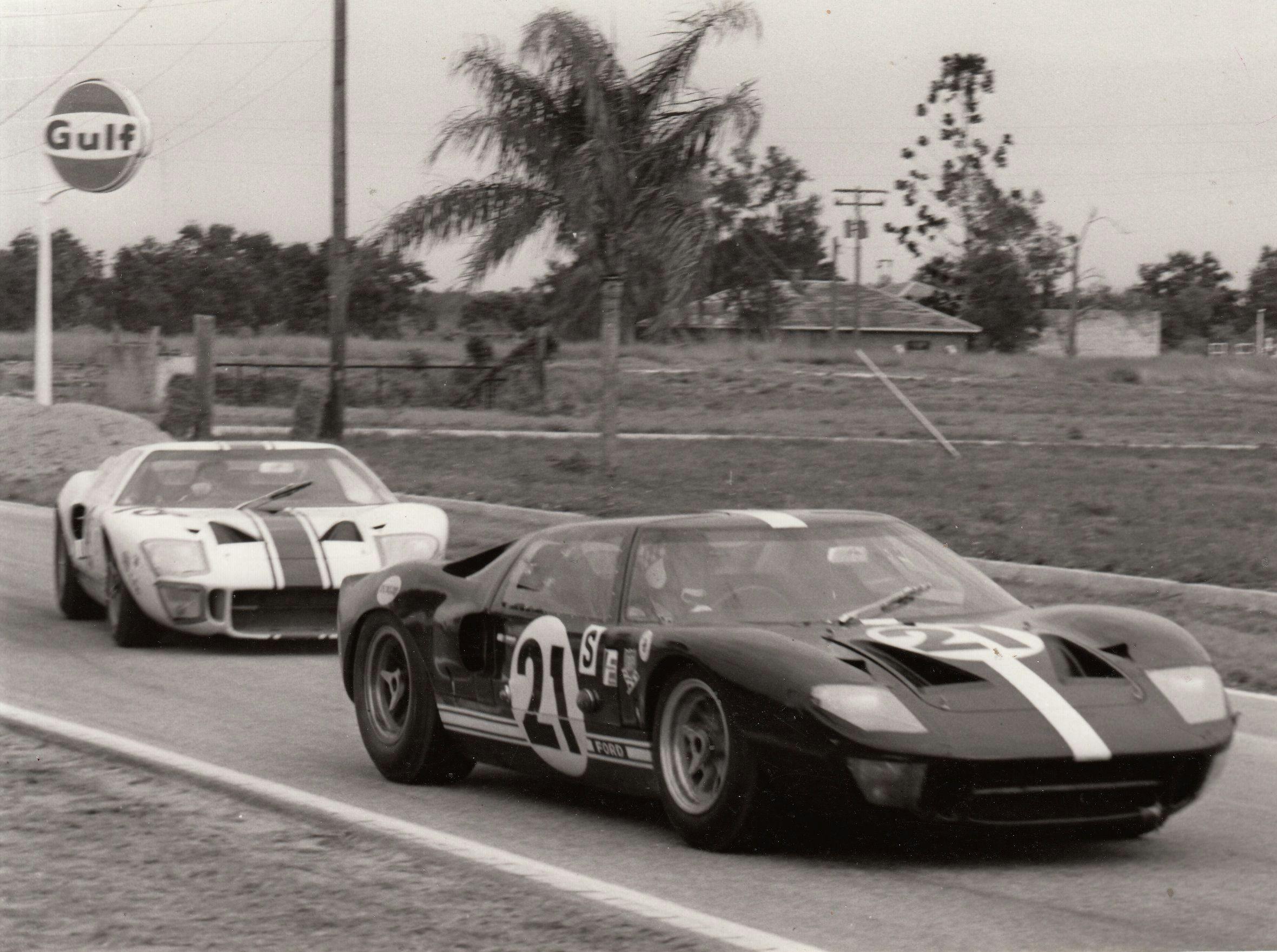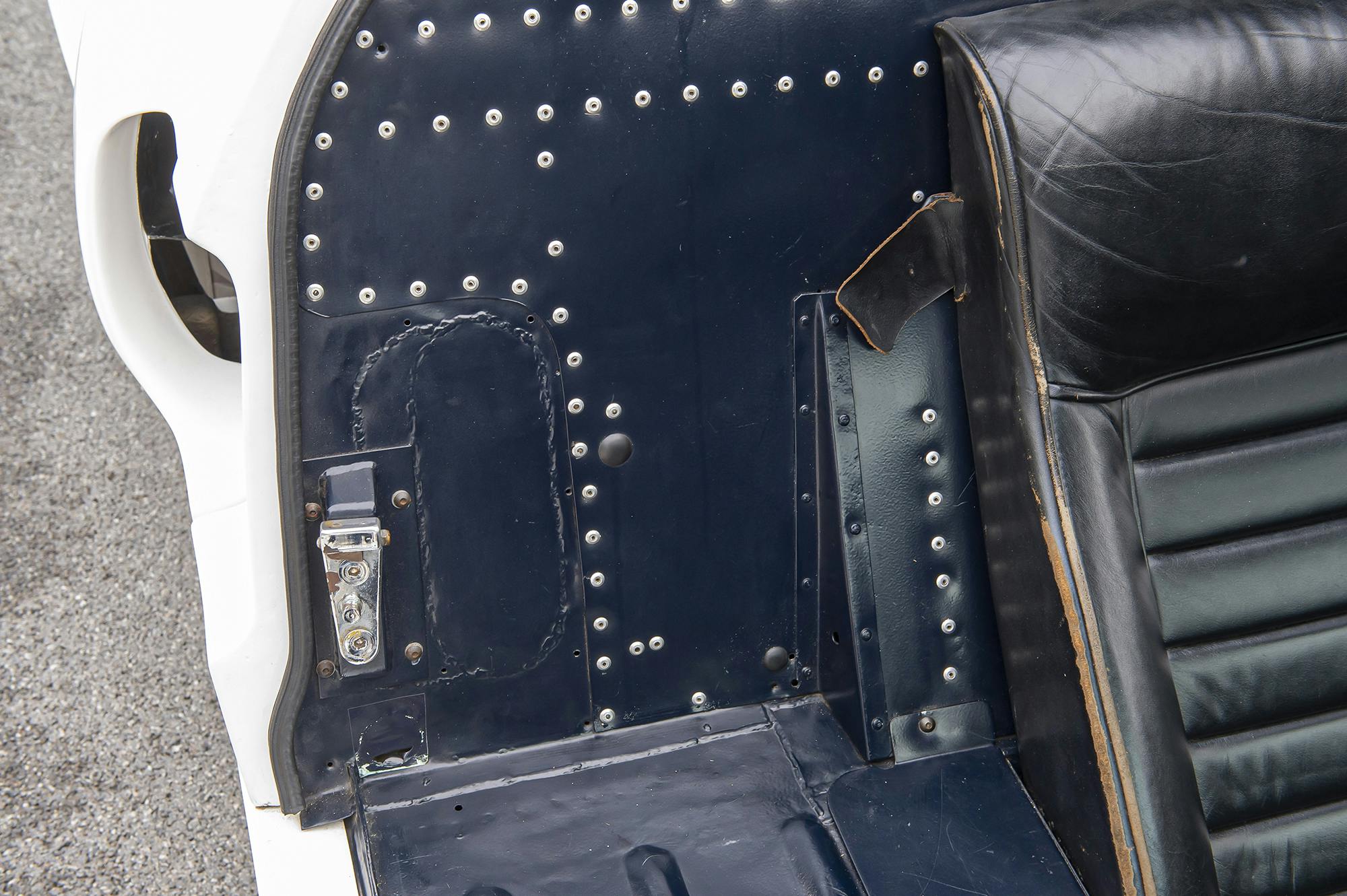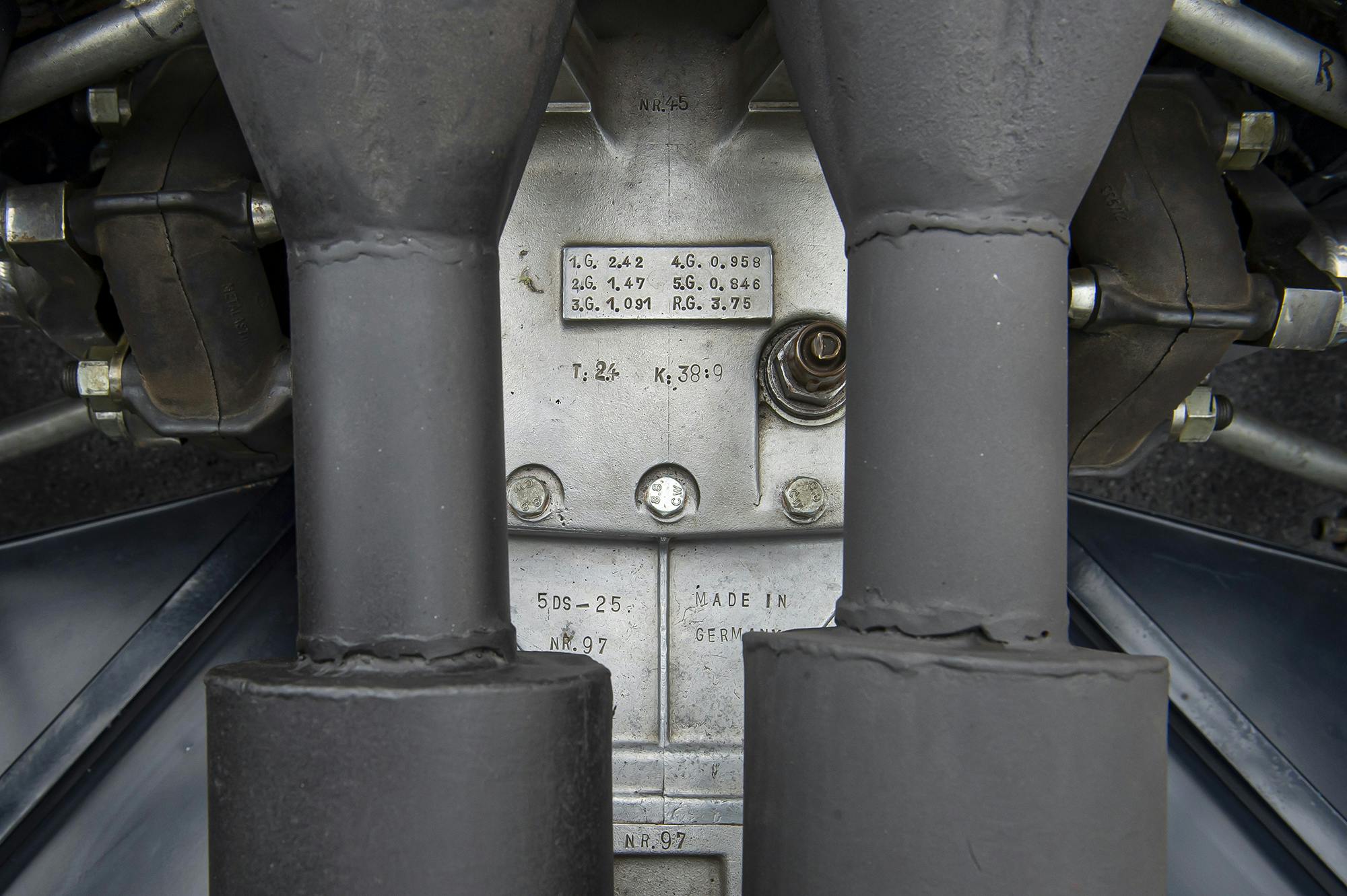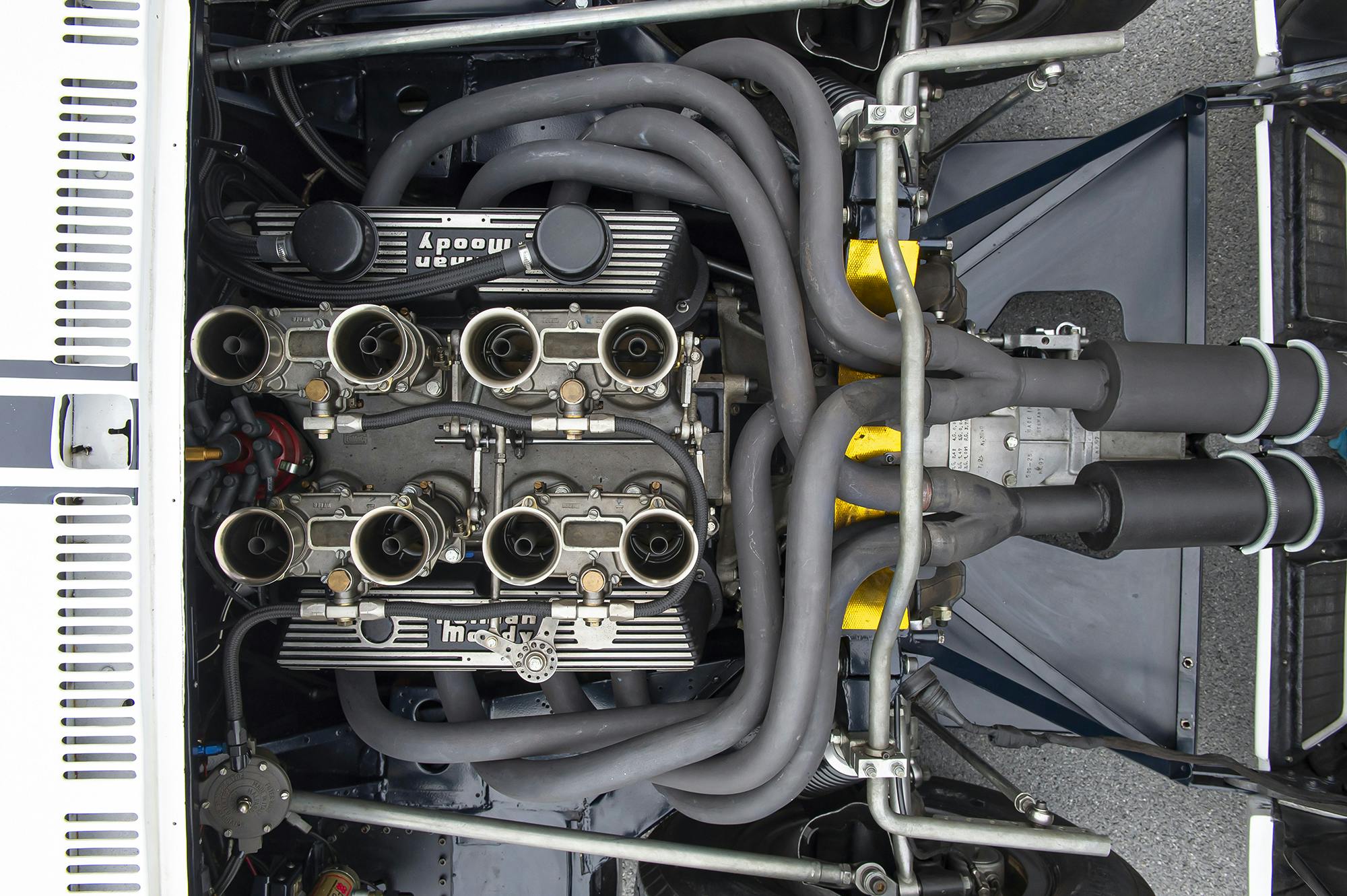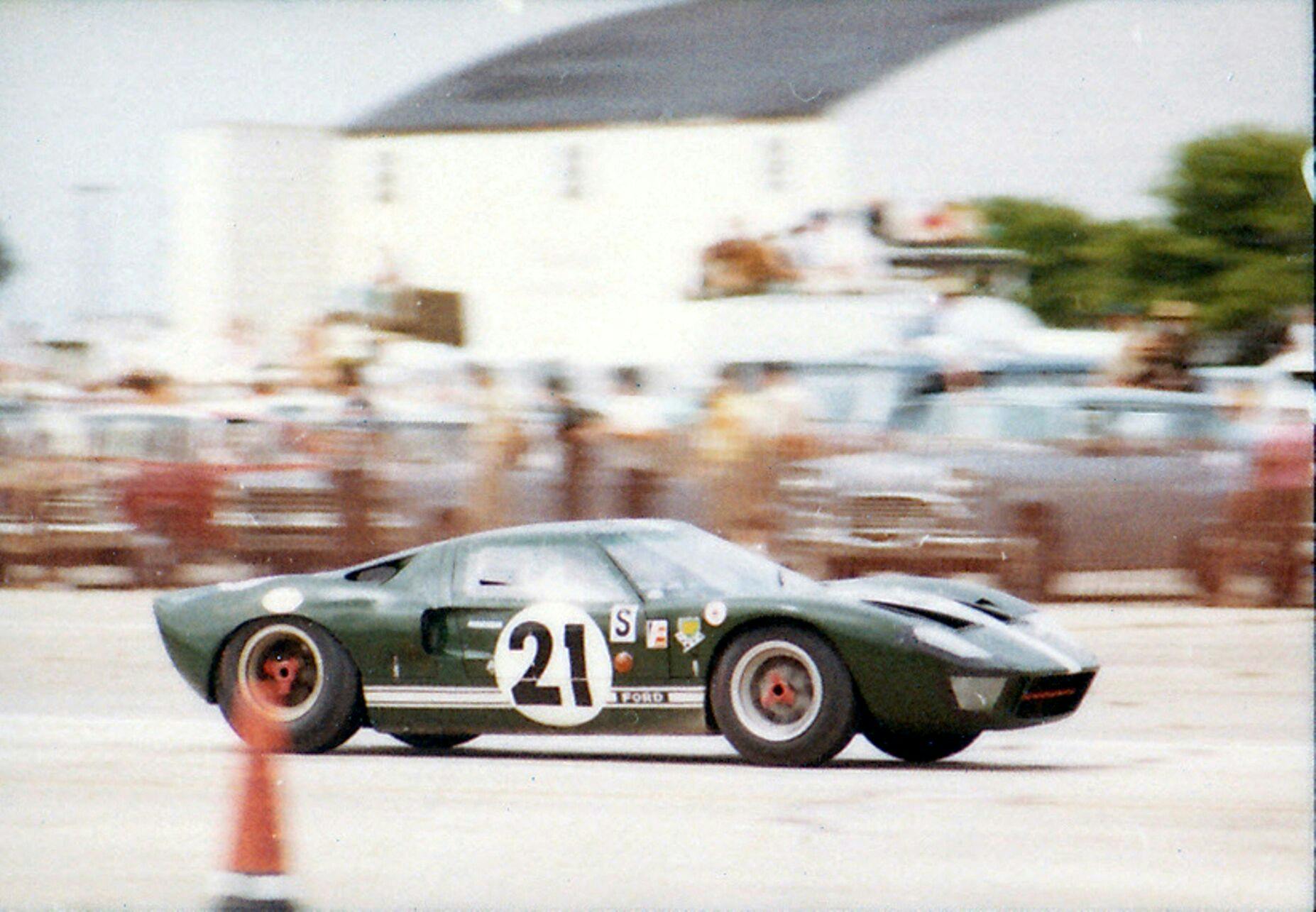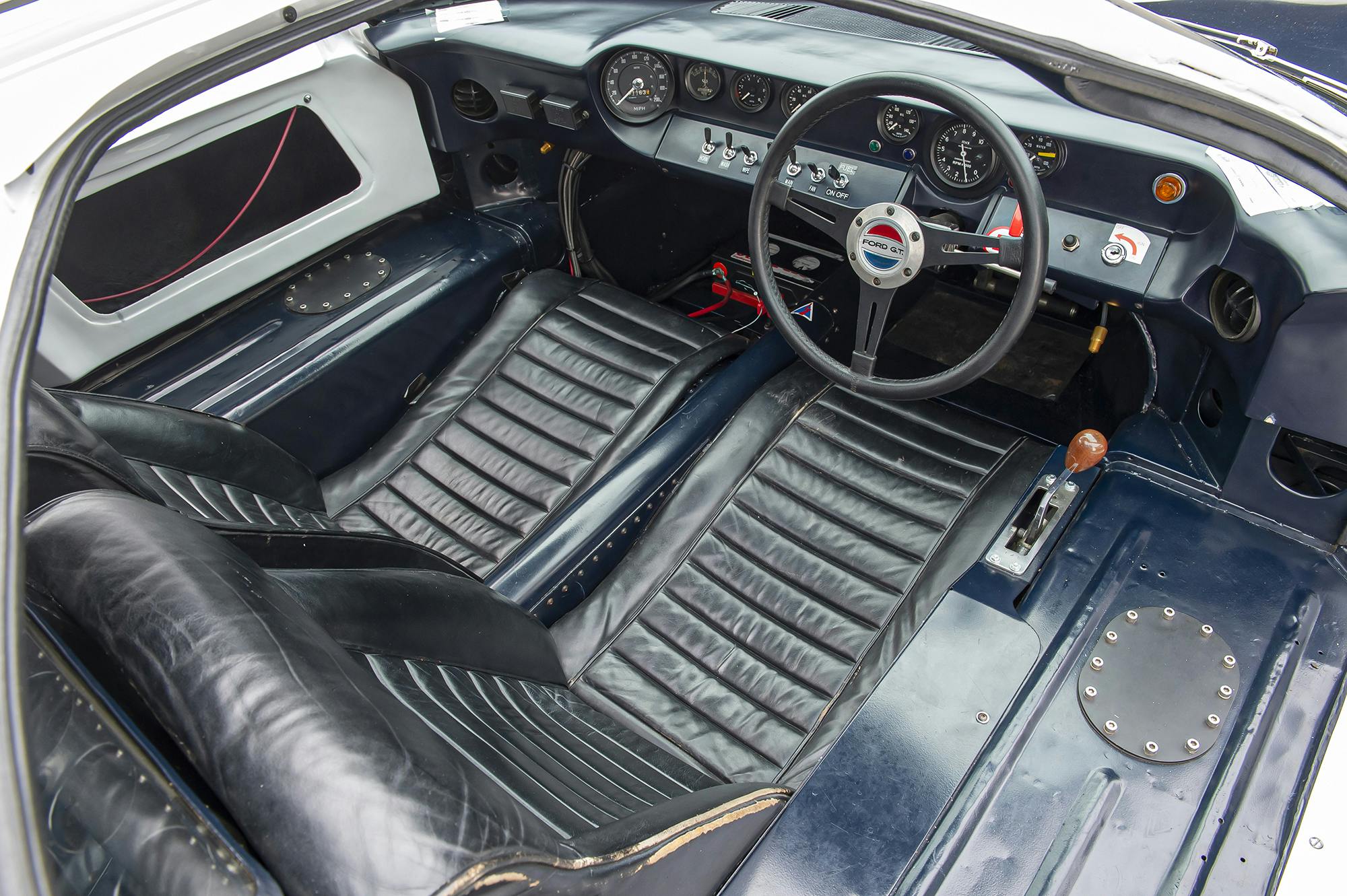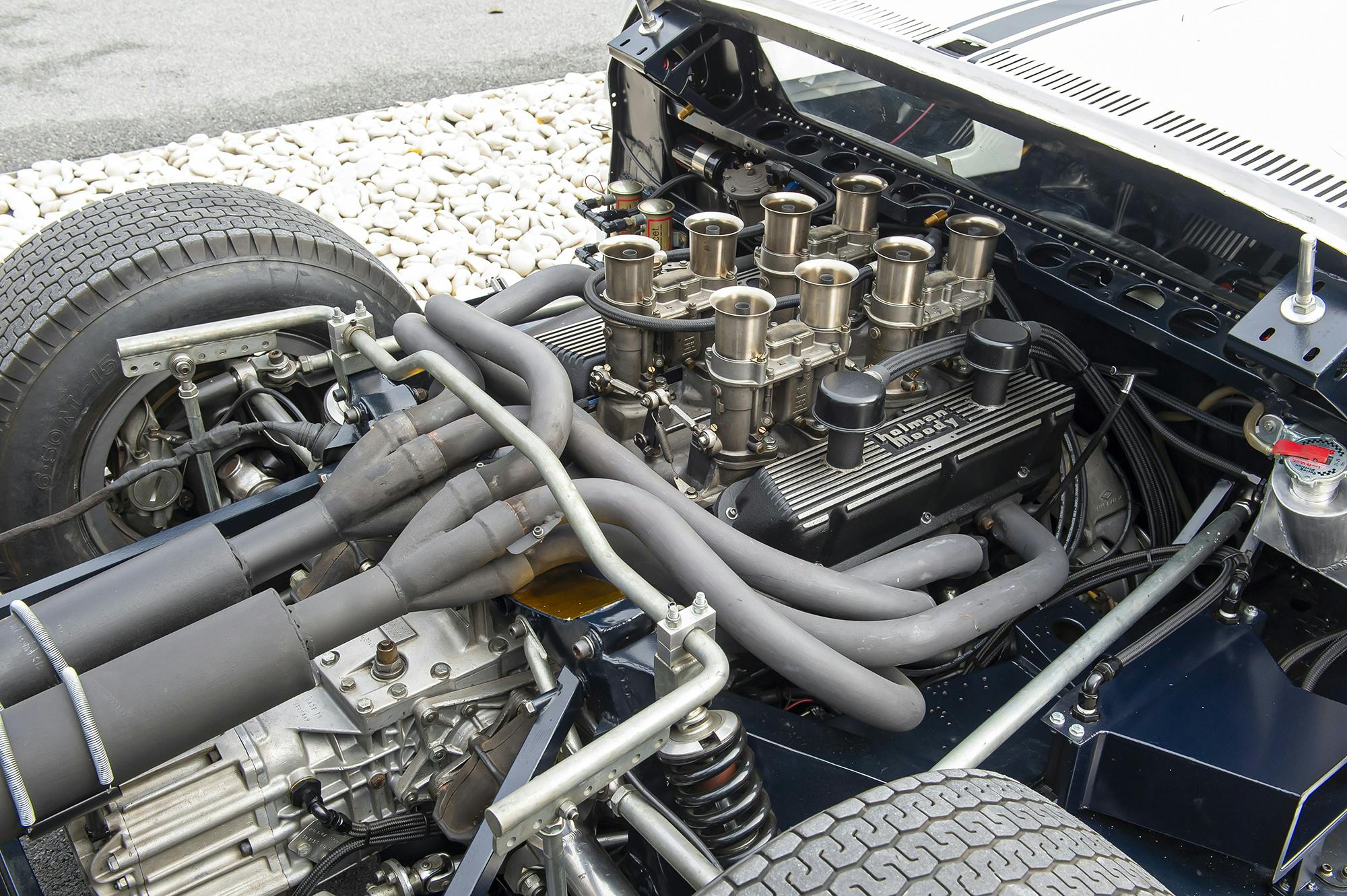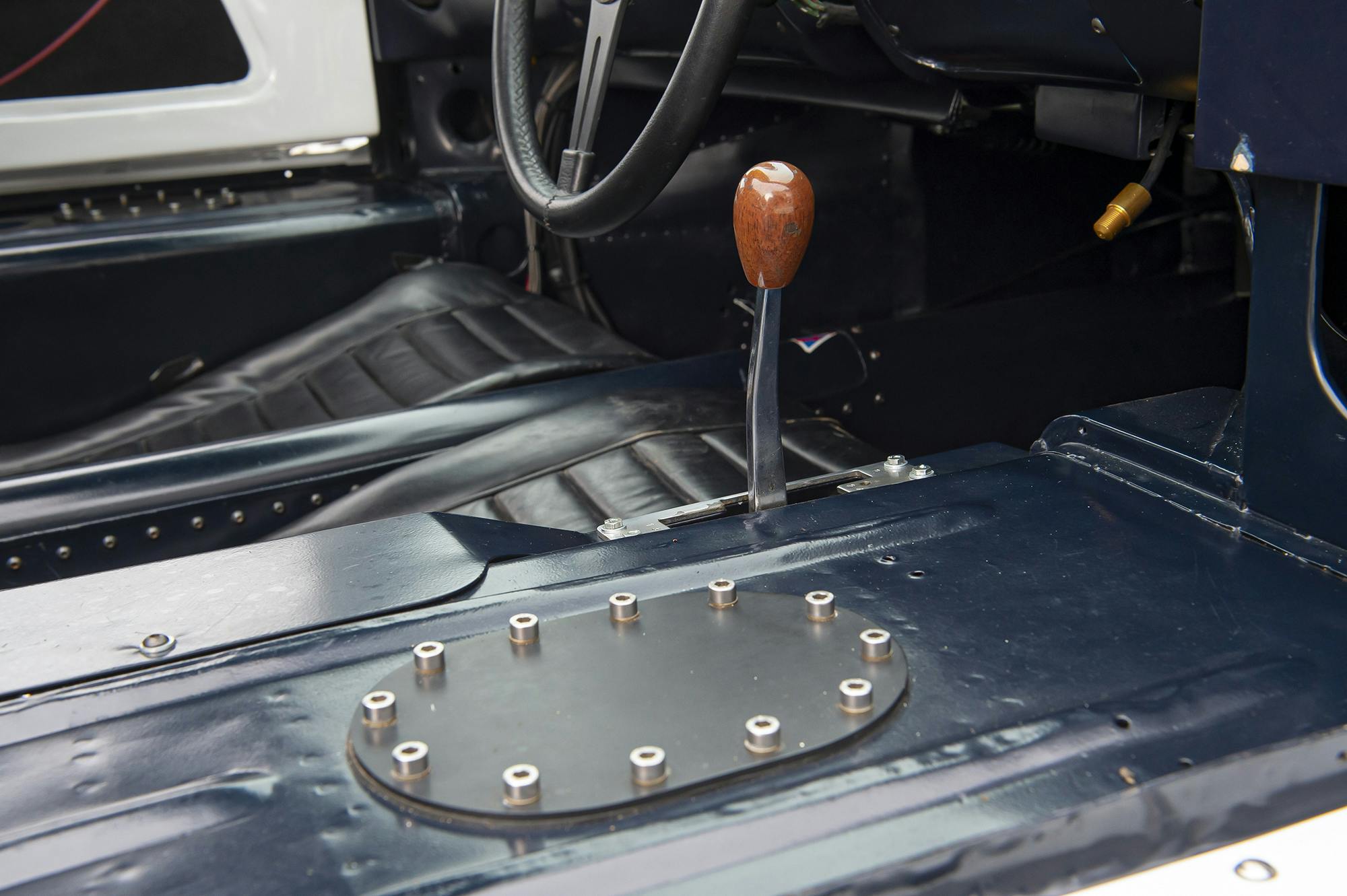Media | Articles
Snag this rare ’64 prototype, a founding father of Ford’s GT40 program
It’s easy to recall only the peaks and troughs of motorsports, like 1957’s horrendous crash at the Mille Miglia or Ford’s long-awaited victory over Ferrari in 1966. However, these moments never occur in isolation; they’re the product of gradual dips and rises, swings in momentum that pushed drivers, teams, and cars to triumph or disaster.
The black-and-white-liveried GT40 before you is one of those inflection points in history, offered for sale by Duncan Hamilton ROFGO. This factory-run prototype is one of five GT40 prototypes assembled in the UK for the 1964 racing season and the first to run a 289-cubic-inch V-8, rather than a 256-cu-in Indy block. Ford hadn’t yet enlisted Carroll Shelby to further develop its racing program, so it was up to Ford Advanced Engineering to hew out the prototypes’ body work, wring out the engines and gearboxes, and troubleshoot the seemingly infinite growing pains of a very young race car design.
S/n GT/105 was one of the hardest-working factory prototypes; it’s the highest-mileage test car still around (Ford scrapped GT/101 and GT/102 in period). Though it didn’t compete at Le Mans in 1964, this car competed at Reims that year, served as a test car for the 1965 24 Hours of Le Mans (today it wears that white, No. 9 livery), and ran at Sebring and Daytona in 1966 under the factory flag.
Marketplace
Buy and sell classics with confidence
Despite the thrashing the car endured, GT/105 was never crashed. You’ll observe several body styles in the pictures above, including what appears to be a Mk I front clip, but that’s not the symptom of a major accident. The same steel chassis rides underneath each configuration of steel panels; a prototype’s job description involved wearing different bodies and clips to test their effectiveness.
This particular GT40 was originally clad in thinner gauge steel than its earlier counterparts, qualifying it a factory “lightweight” example. In addition to being the first chassis to run with the 289 engine, s/n GT/105 was also the first GT40 to swap its relatively fragile Colotti T44 gearbox for a ZF unit. In case you were wondering whose gloves have graced its wooden shift knob, prepare for a list of heavy-hitters: Phil Hill, Bob Bondurant, Bruce McLaren, Innes Ireland, and Roy Salvadori.
True, none of these drivers tasted victory at Le Mans behind the wheel of s/n GT/105, but this car is no less crucial to GT40 history. It’s the direct product of these drivers’ physical and mental labor, the feedback they gleaned during testing and fed to Ford’s team, which then wrenched and welded and hammered the car closer to perfection. It’s this 289 car that hinted to Ford that increased displacement might be the key to Le Mans, leading the team to develop the famous 427 engine that would eventually dominate the Circuit de la Sarthe in 1966.
S/n GT/105 would pave the way not only for 1966’s victory, the focal point of 2019’s Ford v Ferrari, but also for 1967’s all-American win at the hands of A.J. Foyt and Dan Gurney, who sat at the wheel of a Mk IV GT40 like this example, offered now for $1.85M by F40 Motorsports. This particular “J car,” s/n J10, packs the legendary 427 block, topped with two Holley four-barrel carbs. Though it’s offered today in its standard Mk IV configuration, the J10 chassis was once converted to open-top form to run in the Can-Am series.
Back to the car that helped found the lineage, though. S/n GT/105 boasts a venerable litany of drivers, a proven track pedigree, and a critical place in GT40 history—it’s not too far to call this a once-in-a-lifetime opportunity. What might it cost you to add this beast to your collection? Somewhere north of $7,560,000, we’d estimate. (The car’s consignors have chosen not to reveal an asking price or estimate.) The last time a GT40 prototype was offered at public auction was back in 2014, when GT/104 crossed Mecum’s block and notched a final price of $7.56M.
“Based on that sale, it’s reasonable to expect that it will take in excess of that figure to add GT/105 to your collection,” says Greg Ingold, assistant editor of the Hagerty Price Guide.
“GT/105 is an incredibly important car to the GT40 story; of the seven prototype coupes, only three remain,” Ingold continues. “It’s a snapshot of the early days of the GT40 program, when Ford was trying—and mostly failing—to create a race car to take on Ferrari. So many incremental improvements were done later on that it is important to have a record of where it all started.”
To many enthusiasts, GT/105 represents just that—the genesis of the GT40 legacy.



